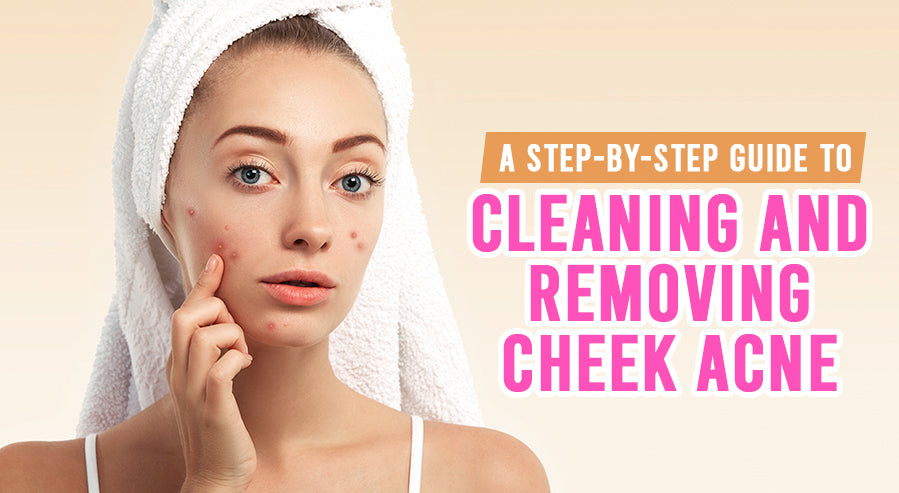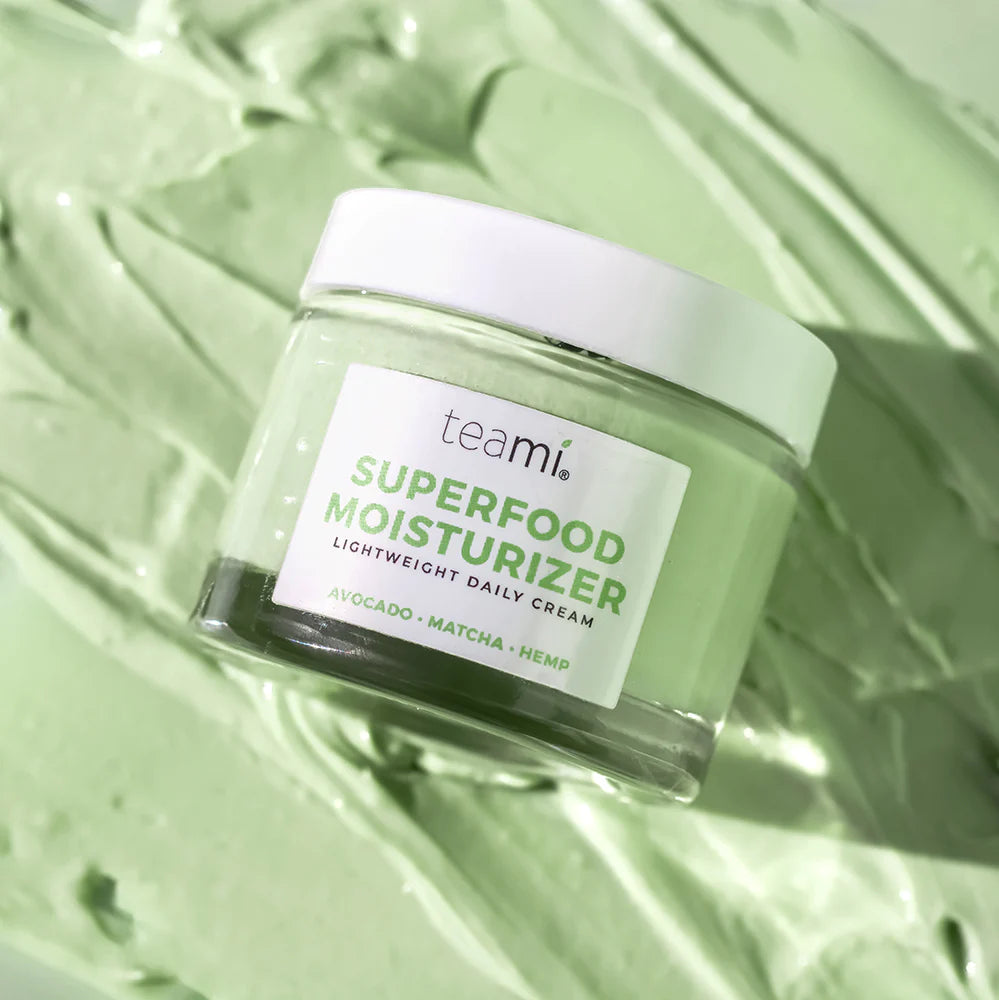A Step-By-Step Guide to Cleaning and Removing Cheek Acne

The most common skin condition worldwide is acne, which affects millions of people daily. While acne is not inherently harmful, it is a blemish that can adversely affect our self-esteem. Most forms of acne are highly visible, especially since the most common forms are bright red or white, which contrast heavily with our skin. Other forms of acne are less noticeable but still generate insecurities about our appearance that further drain our confidence.
With how common acne is, it is hardly surprising that people who suffer chronic breakouts are eager to prevent them. Fortunately, the same commonality has led to well-defined tactics to try and treat acne and mitigate its impact.
The cheeks are the most vulnerable body part insofar as acne is concerned and are, therefore, the part with the most dedicated cleansing tactics. More products and techniques are dedicated to dealing with acne around the cheeks than other body parts. While this might initially be encouraging to those suffering from severe breakouts, it presents another concern.
The abundance of techniques can make it difficult to identify the best techniques and how to execute them. This confusion is further compounded by the countless myths about how to get rid of acne that distract us from effective techniques. This means having access to a step-by-step guide can help narrow down the best process to treat your cheek acne.
Step #1: Clean the Skin
The first step to any skincare routine, even acne treatment, is cleaning the skin thoroughly. When dealing with cheek acne, the cleansing step involves washing your face, but this step can be a little more complicated than it seems. Most people think the best way to clean their skin is to subject it to hot water and use traditional soap on their faces like they would on their hands. While this might seem logical, subjecting your facial skin to harsh soaps and hot water is detrimental. Our skin has a sensitive pH balance that helps maintain its health and appearance. When the pH balance is disrupted, we are susceptible to inflammation, bacterial colonization, and general irritation.
Traditional hand soaps and certain heavy-duty facial soaps can disrupt the skin's pH balance and damage it rather than cleanse it. Most soaps are designed to remove large amounts of dirt and bacteria from the skin around the hands. This area of the body has a denser layer of skin than the face and therefore is less sensitive unless the skin is predisposed to sensitivity. As a result, the hands are significantly less sensitive to damage than the skin on the face, meaning the soaps for hands do not work for the face.

The next issue is the water you use to clean your face, which you might assume should be hot water. This is because there is a myth that hot water opens pores while cold water closes them, but this myth is completely false. Water temperature extremes can irritate the skin rather than help it. If you intend to cleanse your face with water, it is best to use lukewarm water since it is less likely to irritate the delicate balance of the skin. That said, water is not the best option for cleansing your skin, and it is usually recommended to use a specialized cleanser designed to treat skin that is more sensitive.
Step #2: Acquire a Facial Cleanser
Skincare is a major industry in modern society, fueled by issues like acne and the need for products designed to combat the root causes of those conditions. This is why several beauty companies have created specialized cleansers to fight acne, among other skin issues. These cleansers help purge bacteria and contaminants that promote acne breakouts while compensating for particularly sensitive skin.
Most skincare products are marketed towards people with sensitive skin across their bodies, but the low-impact effect of these cleansers makes them effective for facial skin in normal bodies. Unfortunately, many cleansers use certain chemicals to achieve their function and can cause other reactions that are just as harmful.
For those with sensitive skin or an aversion to pharmaceutical-grade cleansers, opting for a cleanser that uses natural ingredients might be best. There is evidence connecting multiple natural plants and substances to improved skin health. Purchasing a cleanser with these ingredients can help combat acne and ensure you only introduce natural substances to your body.

If you are interested in cleansers with natural ingredients, the key is knowing what you want to see in your cleansers:
- Aloe vera: Aloe vera has a long history of treating skin, primarily because it soothes the pain of sunburns. Nevertheless, Aloe vera has been linked to rejuvenated skin and is antibacterial. As a result, cleansers with Aloe vera have a higher chance of minimizing acne breakouts and restoring your skin's health.
- Collagen: Collagen is a protein we all have from birth, though the amount we have is used by our bodies to repair damage and grow new skin. While collagen cannot fight acne, it can help reduce scarring from particularly aggressive breakouts. Collagen repairs damaged skin and facilitates part of our body's natural healing ability. Cleansers and other facial products with collagen can help protect your skin from acne scars.
- Vitamin C: Vitamin C is an essential vitamin that we cannot synthesize ourselves and must acquire through dietary adjustments. Vitamin C can also be processed into topical products and is present in certain facial products. Cleansers with vitamin C can further combat acne since vitamin C reduces inflammation and hyperpigmentation while improving our skin's ability to heal.
Facial cleansers using these ingredients, among others, will have a greater chance of success in reducing acne. Using natural ingredients will help prevent adverse reactions that chemical-based products might elicit. Whether you opt for a natural or pharmaceutical cleanser, using it after washing your face can help purge bacteria and dirt from your pores when applied according to the instructions printed on the label.
Every cleanser will have its own guidelines on how to apply it and how long to let it sit so your skin can absorb it. Despite those differences, cleansers play an undeniably important role in managing acne.
Step #3: Exfoliate
In addition to cleansers, another important tool is an exfoliating agent that will open your pores and remove dead skin cells. This effect might seem irrelevant to preventing acne, but dead skin cells can adversely affect your skin's appearance. The pores are the most susceptible part of the skin to acne breakouts because they can easily get clogged. When pores get clogged, small particulates get trapped inside and irritate the skin from within. Dirt and bacteria are the main offenders in clogged pores and can inflame the skin and induce a breakout. Exfoliation is a process that purges these contaminants from the pores and enables them to breathe so the proper elements reach our skin.
Exfoliation is a common practice and uses tools similar to cleansers designed to be left on for an extended period. Exfoliation products also vary in manufacturing and can be either pharmaceutical or natural, depending on preference. However, the medium you use to exfoliate will alter how frequently you must exfoliate your skin.

While the particulars of the process will vary depending on the product you use, the general rules for how often to exfoliate are as follows:
- Masks and Lotions: If you use an exfoliating mask or lotion, you should exfoliate your skin once or twice a week.
- Scrubs and Brushes: If you use an exfoliating scrub or brush, you should exfoliate your skin 3 to 4 times a week.
While these guidelines are prone to change depending on your specific product, it is important to remember that there is such a thing as over-exfoliating. Exfoliating your skin too much could compromise the oils your skin needs to stay healthy and dry it out. This could lead to worse issues than acne and render your exfoliation moot. Additionally, the type of exfoliator you use might be restricted by the type of acne you have.
Inflammatory acne is a more severe form of traditional acne that involves the development of pustules or cysts rather than traditional zits. Because of the effects of inflammatory acne, the American Academy of Dermatology recommends consulting with a doctor before committing to an exfoliator. This will help ensure your exfoliator does not exacerbate your condition instead of helping it.
Step #4: Do Not Pick At It
Sometimes, treating something like acne is about not doing something. One of the biggest issues with acne is that we feel the urge to pick at it. This is because acne is extremely uncomfortable, and we want to eliminate it however we can. As a result, we often find ourselves involuntarily picking at the nodules on our cheeks. Some people even attempt to pop or peel them off to relieve the sensation or hide the blemish. The problem is that picking at acne is one of the worst things you can do to your skin. This is because these nodules form on the pores where the bacteria colonize, which are sensitive to the elements.
Acne already compromises the health of pores, and the risk of recurring acne is high in areas where zits formed previously. Popping or picking a zit could expose the pore to the elements while recovering from the previous infestation. This increases the risk of infection or scarring on and around the pore where the zit formed. The former increases the odds of secondary outbreaks from the same pore, and the latter generates another blemish that is harder to remove. Either consequence could exacerbate the effects of acne and further damage your self-confidence and skin health.

Unfortunately, there are no tools designed to inhibit our impulse to pick at acne, and it is entirely a matter of will. You will need to exercise restraint and consciously refrain from picking at your zits or touching your cheeks in general. Touching your face spreads oil, bacteria, and dirt that can spread into your pores and promote additional outbreaks. Therefore, you should try to keep your hands away from your face and try to recognize when they start drifting to your cheeks. This might seem trite, but there is little else we can do to prevent ourselves from touching our cheeks and spreading contaminants.
Finding the Right Blend
Acne is an issue that never goes away and can affect us as adults despite the hormones from puberty fading. Despite the commonality of acne, there are tools we can use to fight it and minimize the rate of breakouts. The key is keeping our skin clean and our pores clear of contaminants like bacteria and dirt. Unfortunately, some forms of acne are more severe and require attention from a licensed dermatologist.
While this is a possible issue, most acne can be addressed with certain products designed to promote skin health. Cleansers and exfoliators are the key products for resolving acne and are readily available from online and retail vendors. The problem is that not all dermatological products are created equal. Part of protecting our skin is minimizing contact with harsh substances like certain chemicals or traditional hand soaps.
While pharmaceutical acne treatments have their place, they can occasionally be too harsh on sensitive skin. Because everyone's skin is different, some people need a lighter, more natural touch to handle their acne. Fortunately, there are natural acne products available.

We at Teami focus on creating cosmetic health products from natural compounds that provide the effects we need without harsh chemicals. Acne is one of the many conditions we strive to help you fight, which is why we offer our Gentle Superfood Liquid Cleanser and Hibiscus Infused Vitamin C Serum. Both products are designed to revitalize, cleanse, and exfoliate the skin. Both products also use anti-acne substances like Aloe vera and collagen that can help you protect your skin from future outbreaks. If you want a more natural approach, we encourage you to visit our website and let our products speak for themselves. After all, finding the right blend is a Teami effort.
Subscribe to our Newsletter
Subscribe to our newsletter and get 10% off your first purchase
 Instagram
Instagram



